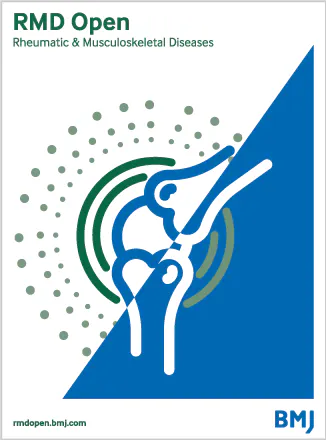优化痛风治疗:护士主导的队列研究的启示
IF 5.1
2区 医学
Q1 RHEUMATOLOGY
引用次数: 0
摘要
目标 目前,痛风的治疗,尤其是降尿酸治疗(ULT),往往不尽如人意。护士成功地治疗了包括痛风在内的各种疾病。随着痛风患病率的上升,风湿免疫科医生和全科医生面临短缺,因此必须采取新的方法。这项现实生活中的前瞻性队列研究评估了护士主导的护理在两年时间内采用 "靶向治疗 "策略管理痛风的效果。方法 将所有连续确诊的痛风患者纳入研究。由护士主导的诊所提供结构化治疗计划,包括咨询、患者宣传单、电话联系和实验室监测。在接受了一年的护士指导治疗后,患者转到全科诊所继续接受治疗。随访数据通过登记完成。主要结果是确诊后 2 年达到目标 p 尿酸水平(<0.36 mmol/L)。次要结果包括治疗的持续性和特定亚组的 p-urate 目标水平。结果与在同一诊所确诊但接受 "常规护理 "随访的患者进行了比较。结果 在以护士为主导的治疗组(人数=114)中,83%的患者达到了目标p-尿酸水平,98%的患者继续接受超低浓度治疗。这一趋势在不同的患者分组中持续存在。在常规护理中,只有 44% 的患者达到了 p-urate 目标值,且别嘌呤醇剂量不足。护士主导的护理平均需要在 336 天内进行两次探访和三次电话联系。2年的死亡率为15%。结论 以护士为主导的痛风护理采用有针对性的方法,超低剂量治疗的接受率和坚持率都非常高。尽管直接比较可能会受到选择偏差的影响,但常规护理并未取得令人鼓舞的效果。本文章由计算机程序翻译,如有差异,请以英文原文为准。
Optimising gout treatment: insights from a nurse-led cohort study
Objectives Currently, gout management, particularly urate-lowering therapy (ULT), is often suboptimal. Nurses successfully manage various diseases including gout. As gout prevalence is rising, and rheumatologists and general practitioners face shortages, a new approach is imperative. This real-life prospective cohort study evaluated the effectiveness of nurse-led care employing a treat-to-target strategy for gout management over a 2-year period. Methods All consecutively confirmed gout patients were included. The nurse-led clinic provided a structured treatment plan with consultations, patient leaflets, telephone contacts and laboratory monitoring. After a year of nurse-led care, patients transitioned to continued care in general practice. Follow-up data were complete through registries. The primary outcome was achieving target p-urate levels (<0.36 mmol/L) at 2 years after diagnosis. Secondary outcomes included treatment continuation and achievement of target p-urate levels in specific subgroups. The results were compared with patients diagnosed in the same clinic but followed up in ‘usual care’. Results In the nurse-led group (n=114), 83% achieved target p-urate levels and ULT was continued by 98%. This trend persisted across various patient subgroups. Only 44% of patients in usual care achieved target p-urate and with insufficient doses of allopurinol . Nurse-led care involved an average of two visits and three telephone contacts over 336 days. The 2-year mortality rate was 15%. Conclusions Nurse-led gout care, employing a targeted approach, was associated with a very high uptake of and adherence to ULT. The encouraging results were not achieved in usual care although a direct comparison might be influenced by selection bias.
求助全文
通过发布文献求助,成功后即可免费获取论文全文。
去求助
来源期刊

RMD Open
RHEUMATOLOGY-
CiteScore
7.30
自引率
6.50%
发文量
205
审稿时长
14 weeks
期刊介绍:
RMD Open publishes high quality peer-reviewed original research covering the full spectrum of musculoskeletal disorders, rheumatism and connective tissue diseases, including osteoporosis, spine and rehabilitation. Clinical and epidemiological research, basic and translational medicine, interesting clinical cases, and smaller studies that add to the literature are all considered.
 求助内容:
求助内容: 应助结果提醒方式:
应助结果提醒方式:


